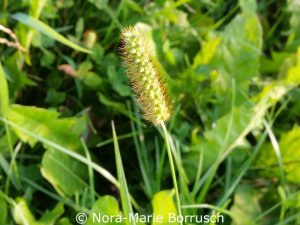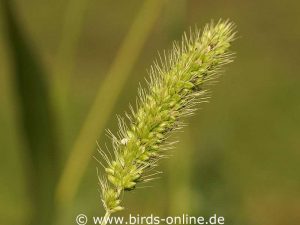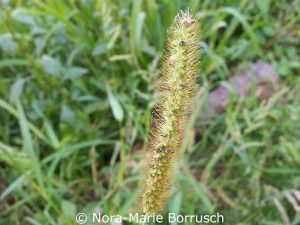- >>
- Birds Online – English
- >>
- Nutrition
- >>
- Healthy bird food from...
- >>
- Native grasses and cereals
- >>
- Bristle-grass (Setaria)
Bristle-grass

Several species of the genus Setaria occur in Central Europe. They are commonly known as foxtail or bristle-grass, referring to their bristly spikelets. All of them belong to the botanical family of grasses (Poaceae). The green foxtail (Setaria viridis) and the yellow foxtail (Setaria pumila) are especially common but other species like the rough bristle-grass or hooked bristle-grass (Setaria verticillata) can be found in nature as well.
Many pet birds like to feed on ripe or semi-ripe bristle-grass, though the seeds are fairly small. This wild grass can be collected from spring until summer or late summer. Half-ripe bristle- grass can also be preserved for winter by freezing it.
Some advice: Some birds do not like to feed on these grasses because of the small barbs on their bristles. If you cut the bristles off with scissors, the panicles become more appealing. In general, the barbed bristles get harder the riper the grass is. On semi-ripe foxtail they are usually still soft enough to be tolerated by most birds.
You can find more pictures of the green foxtail and the yellow foxtail on the website naturgucker.de (German website, but also available in English language).
German – English translation: Sarah Wiechers


